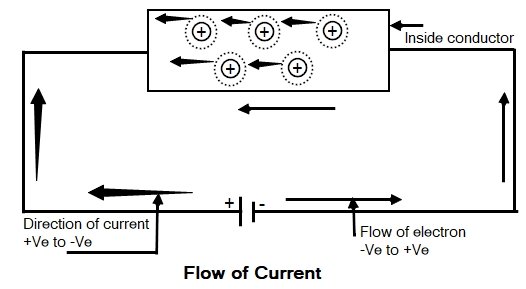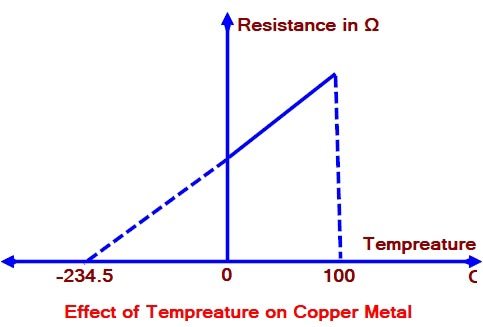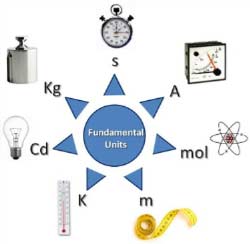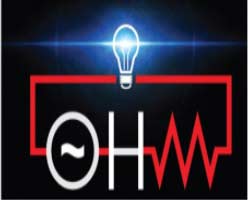Fundamental Of Electrical Engineering |Concept of Charge & Current
It is a branch of engineering which deals with the flow of current which is due to the flow of charge. The study of electrical engineering involved the analysis of the energy from one form to another or one point to another. Electrical energy is a convenient source and efficient for the production of light, mechanical energy, and information processing.
Concept of Charge
Electric charge is the physical property of matter that causes it to experience a force when placed in an electromagnetic field.
All matters are made up of fundamental building blocks known as Atoms. In all the atoms, there exists the number of electrons which are very loosely bound to its nucleus. Such electrons are free to wonder about, through the space under the influence of specific forces. Now when such electrons are removed from an atom such that the number of protons becomes more than the number of electrons then it becomes positively charged. This is because of loosing negatively charged particles i.e. electrons from it. In the reverse case, if excess electrons are added to the atom so that the number of electrons becomes more than the number of protons then it becomes negatively charged.
The charge possed by the proton is equal to 1.602 × 10-19 whereas the charge possed by the electron is equal to -1.602 × 10-19. The symbol Q often denotes charge and the SI unit of electric charge is the coulomb (C). The charge on one electron is 1.602 × 10-19, so the one-coulomb charge is defined as the charge possessed by the total number of ( 1/ 1.602 × 10-19) electrons i.e. 6.24 x 1018 number of electrons. Hence if we add or remove the number of electrons then the charge possed by the elements will also change.
Concept of current and Electromotive force
Consider a conductor that has large numbers of free electrons moving in the random direction. Now when we apply an external source to the conductor, then all free electrons drift along the conductor in a particular direction. The direction of the electrons will depend upon how the external source is applied to the conductor.
Hence the electrical source required to drift the free electron in a particular direction in a given conductor is called an electrical Electromotive Force.
As we know that the free electrons are negatively charged, when the external source is applied (such as the cell) then free electrons get attracted by the positive of the cell connection. Therefore the electrons get aligned in the particular direction under the influence of an electromagnetic force.
- An ion is an electrically charged particle produced by either removing electrons from a neutral atom to give a positive ion or adding electrons to a neutral atom to give a negative ion. When an ion is formed, the number of protons does not change.
- When the free electron gets dragged towards positive from an atom it becomes the positively charged ion. Such positive ion drags a free electron from the next atom. This process repeats from atom to atom along the conductor. So there is the flow of electrons from negative to positive of the cell. This movement of electrons is called an electric current. The movement of electrons is always from negative to positive whereas the movement of current is assumed as positive to negative.
Relation between Charge and Current
The flow of electrons is called an electric current hence the current can be measured by the number of electrons passing through the material per second. In other words, the rate of flow of charge per unit time is called as current. Current is measured in coulombs per second and one coulomb per second is called Ampere.
The relation between current and charge can be given as
I = Q/T Ampere
I = Average current flowing
Q = Total charge Transform
T = Time required for transfer of charge
Direction OF Current
In a source, the Direction of current is from lower potential to higher Potential while in an element the direction of current is from higher potential to lower potential.
Concept of Electric Potential and Potential Difference
When two opposite polarity charged particles are brought Near, they tend to attract each other while on the other hand when two similar charged particles are brought near they tend to repel each other. Therefore Every charged particle has the tendency to do work.
The ability of the charged particle to do the work is called its electrical potential. The difference in electric potential is also known as voltage or electric potential energy difference. The unit for electric potential is the volt, in memory of Alessandro Volta.
An electric potential (also called the electric field potential, potential drop or the electrostatic potential) is the amount of work needed to move a unit positive charge from a reference point to a specific point inside the field without producing any acceleration. Typically, the reference point is Earth or a point at Infinity, although any point beyond the influence of the electric field charge can be used.
Mathematically, it can be expressed as
Electrical potential = Work Done/Charge = W/Q
Why is the electric potential of Earth is taken as reference Point?
For the measurement of level, we have a standard or a zero level, that is sea level and for the measurement of temperature, a zero of temperature, that is the temperature of melting ice, so also for the measurement of potential, we must have a standard or a zero of potential. The potential of the earth is taken to be zero of potential. For this purpose, the earth has been chosen because of its huge size, so that the small charges with which we have to deal with, if given to it or taken from it, produce no change in its potential.
Thus, a body whose potential is higher than that of the earth is said to have positive potential and one whose potential is lower than that of the earth is said to have a negative potential. Hence, if a positively charged body be connected to the earth, the charge will flow from the body to the earth (the body being at a higher potential than the earth until the potential of the body also becomes the same as that of the earth. Now if a negatively charged body be connected to the earth, the charge will flow from the earth to the body, because now the potential of the earth is higher than that of the body and again the potential of the body becomes the same as that of the earth.




